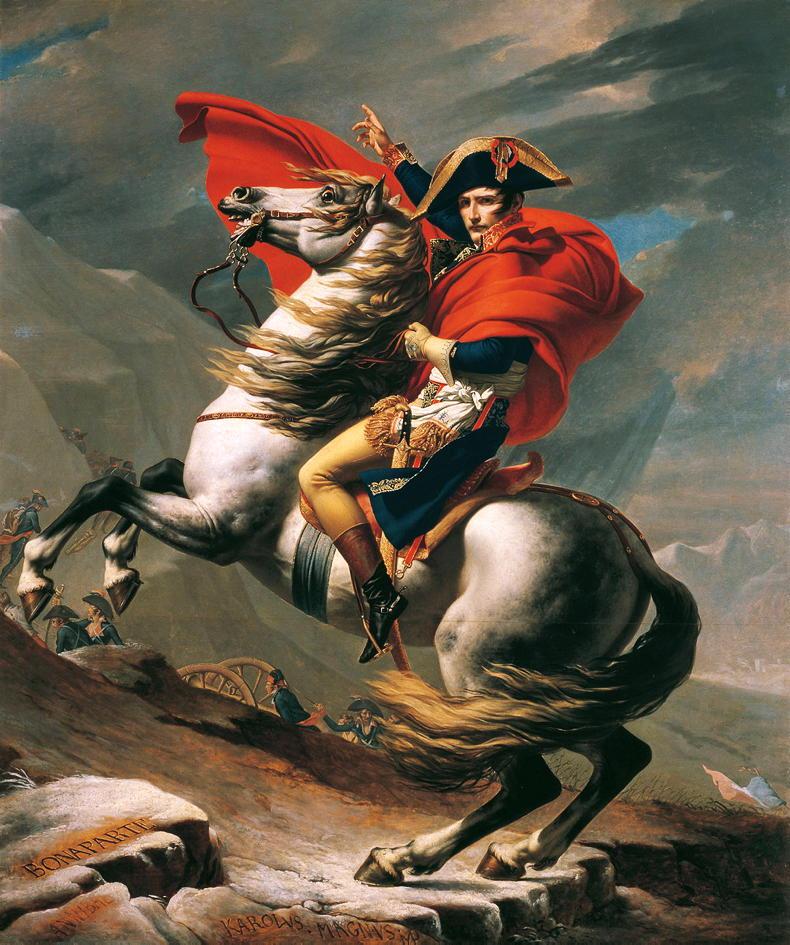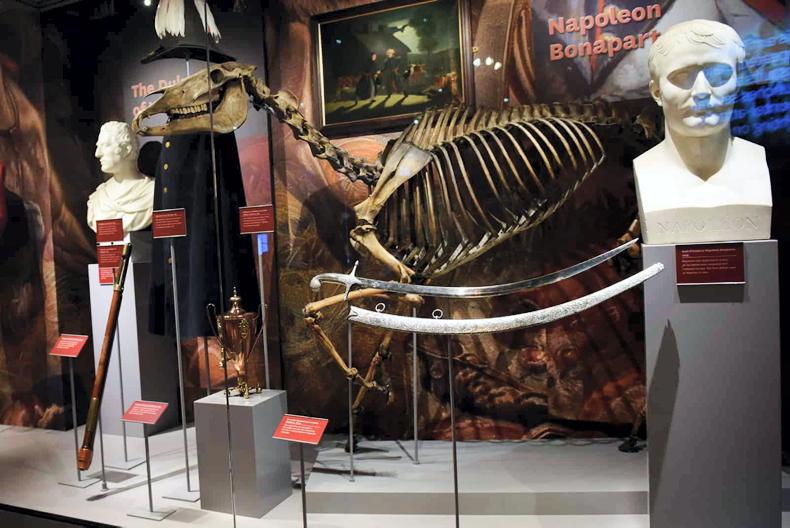THE old tale of Napoleon’s horse Marengo was raised again in the public press a few years ago, following a suggestion that his skeleton be ‘returned home’ from London to Cahermee.
Over the years the story of the origin of ‘Napoleon’s favourite charger’ has been told, and retold, in books, journals and the press. The claim of a Wexford origin has been recorded many times, but not since 1893 by a member of the family concerned.
I, my siblings and cousins heard in our childhood that Marengo had been bred by our great-great-great-grandfather Annesley Brownrigg of Park Annesley, near Camolin in Co Wexford. He was born in 1749, was a surgeon-major in the 13th Light Dragoons, and a magistrate during the 1798 Rebellion.
The Irish Racing Calendar 1794’s list of subscribers includes Annesley Brownrigg Esq. Annesley was a breeder of racehorses, one of which was the grey filly Vagary who ran at Cashel and at the Curragh in that year. Vagary produced a colt foal at Park Annesley on Whit Monday in 1796. Named Young Hidalgo, he was sired by Hidalgo, a son of Eclipse whose own name lives on in the racing world to this day. In April 1802 Annesley’s ‘Five-year-old Grey Horse by Hidalgo’ was placed third at the Curragh.
Annesley’s granddaughter, Anna Annesley Brownrigg, in a letter to The Irish Times on February 2nd, 1893, wrote:
“Sir, - I read with great pleasure your capital article in Monday’s issue of your paper on Napoleon’s chargers. As you did not mention Marengo’s birthplace or early days, you may be interested to hear that he was an Irish horse, bred by a County Wexford gentleman, Annesley Brownrigg, J.P., Park Annesley, in that county, and formerly an officer in the 13th Hussars.
“Marengo (or Young Hidalgo as Mr Brownrigg called him) was foaled on Whit Monday, 1798, the memorable day of the insurrection in the County Wexford. Young Hidalgo’s sire was Hidalgo, and his dam Vagary; his grand sire was Eclipse, a celebrated horse in the last century. Young Hidalgo, afterwards Marengo, was 16 hands high, and perfectly white in colour.
“Mr Brownrigg sold him for £100 to Mr Cavendish, a brother officer, who resold him to a French colonel for £1,000. This gentleman, it seems, presented the horse to Napoleon. These details are perfectly accurate, being taken from the manuscripts of Mr Annesley Brownrigg, who never lost sight of his favourite horses.”
Another letter to the same paper on February 1st, from a Francis Pentland Colley (the Colley family was related by marriage to the Brownriggs) told the same general story; that the horse “belonged to Annesley Brownrigg, Esq., of Park Annesley, in this county, who was surgeon and lieutenant in I think, the 15th Light Dragoons. Mr Brownrigg was famous as a horseman and for his fine horses. I remember him very well for some years before his death in 1827, when I was at his funeral; and this account of ‘Marengo’ was well known during his lifetime.”
Mistaken
Miss Brownrigg’s date of 1798 in her above letter would appear to have been a mistake on her part by the following evidence. A note in The Scottish Antiquary or Northern Note and Queries, 1895, reads: “- - information from F. P. Colley, Esq., - - Marengo was foaled on Whit Monday 1796 - - The letters of Miss Brownrigg make it quite certain that - - date of his birth was 1796.”
The date of Whit Monday (May 16th) 1796 would have made Young Hidalgo a five-year-old in April 1802, as at that time horses were aged from May Day.
On a manuscript titled Brownrigg Family Tree of the 1880s is written in the same hand: “Annesley Brownrigg 13th Lt Dragoons had the horse which was afterwards known as Napoleon’s charger Marengo He was about to shoot it in a fit of passion for bolting off a (? course ?) when £105 was offered him for it by a Mr Cavendish who subsequently took it to France, a French gentleman gave him £500 for it to present to the Emperor who is stated to have rewarded him with a commission. “
The myth of Marengo started after Waterloo when Napoleon’s horse, identified by the “N” and Laurel Leaf Crown branded on his rump, and the Bee motif on the harness, was captured by Lord Henry Petre and brought to England. He was exhibited in London from 1823 as Marengo. Napoleon’s White Barb Charger.
He was sold to a J. W. Angerstein and put to stud as Napoleon’s Arabian for a fee of 10 guineas, but the resulting two colts and a filly, named Araby, did not shine on the racecourse, and so Marengo was put out to grass at Weeting Park in Suffolk where he died in 1832.
Hooves missing
His skeleton was put on display in London and, missing two hooves, may be seen to this day in the National Army Museum in Chelsea. One of the missing hooves, mounted in silver, is in the officers’ mess, St James’s Palace, and is inscribed thus: “Hoof of Marengo, Barb charger of Napoleon, ridden by him at Marengo, Austerlitz, Jena, Wagram, in the campaign of Russia and lastly at Waterloo” and also “Presented 8th April 1840 by J. W. Angerstein, Captain Grenadier Guards and Lieutenant-Colonel, to his brother officers of the Household Brigade.”
The fourth hoof is in the possession of a descendant of Angerstein who lives in Somerset, and may be on loan to the Household Cavalry Museum. Both of these hooves are very much smaller than those of a thoroughbred racehorse, and the skeleton is that of a small horse of 14.1 hands. Young Hidalgo was 16 hands, so Marengo in London was quite obviously not that horse, nor indeed any other Irish thoroughbred horse.
Notwithstanding that, there seems no reason to doubt that Young Hidalgo may well have gone to Napoleon’s stables, and perhaps other grey horses from Ireland also.
A book, Marengo The Myth of Napoleon’s Horse, by Jill Hamilton, published in 2000, tells in great detail the history of Napoleon’s horses. Napoleon had some 200 horses and favoured Arab stallions, which were small and sure-footed and gentle in nature, and frequently white. “He had 8 or 10 --- little, skinny ---sweet and gentle and reliable- nearly all stallions with full manes and tails “.
Among them were the Arabs: Vizir, Ali, Tauris and many others. Marengo is alleged to have been captured in Egypt after the Battle of Aboukir in 1799. He is also alleged to have been taken at the Battle of the Pyramids in 1798 and to have been a gift from General Menou.
Favourite horse
Napoleon did apparently have a favourite horse kept at the Jardin des Plantes, “the celebrated white Arabian stallion of which Buonaparte was so fond”, that was probably Ali, the gift of General Menou.
According to French records Ali was at the Battle of Marengo in 1800, at Austerlitz in 1805, at Jena in 1806, but did not go to Moscow, being at stud in France in 1812.
However, it is significant that there is no record of the name Marengo in any French records. Napoleon’s saddler, Vincent, recorded that Napoleon rode Tauris at Waterloo. It seems that the name Marengo only started after the horse arrived in England.
Park Annesley passed to the Synnott family after the Brownriggs left in the late 1800s. My mother visited the farm in the mid-1900s and was told the story of Marengo by a Mr. Synnott who could point to the spot where the foal was dropped.
Kyran W Supple Kane, MRCVS, is a member of the family that bred Marengo, and he lives in Castlebellingham, Co Louth




 This is a subscriber-only article
This is a subscriber-only article
 It looks like you're browsing in private mode
It looks like you're browsing in private mode






SHARING OPTIONS: